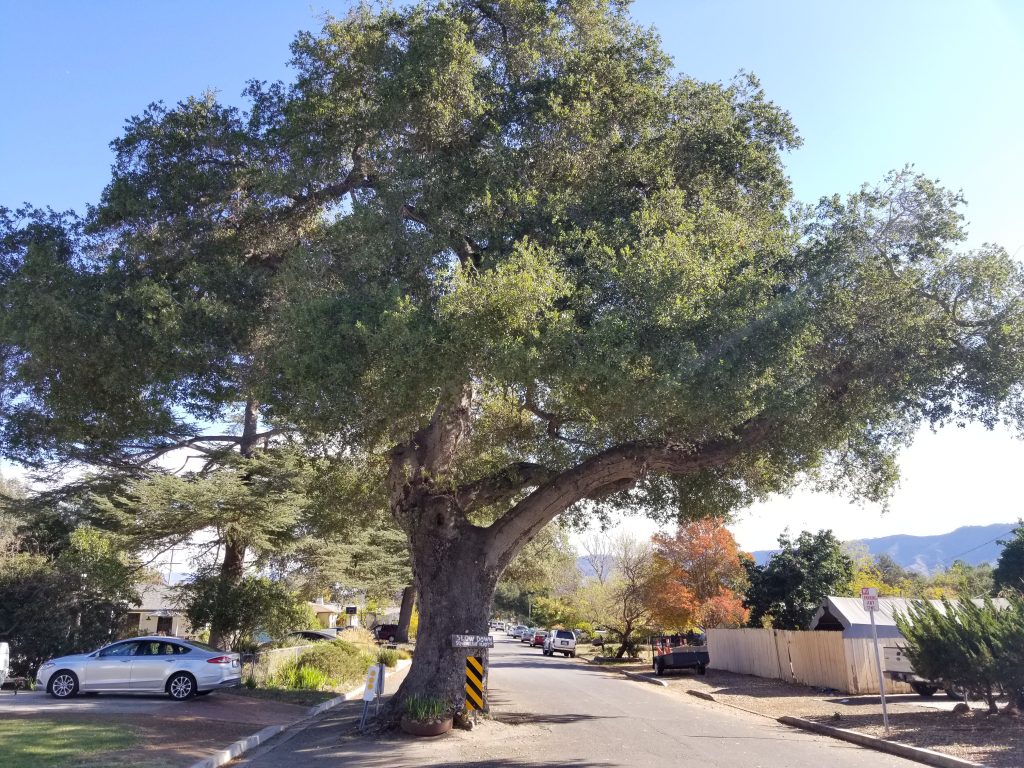
Very large and old trees don’t often attain size and splendor free of defect and disease. A mature tree may have accumulated some damage, injury or disease along its path to grandeur. It can contain hazardous branch attachments that have not failed yet, large sections of dead wood or it may bear the burden of an assemblage of cables and other devices installed over the years to sustain it. Very old mature trees have endured perhaps multiple human lifetimes of exposure to storms, droughts, pests and, perhaps worst, early pruning practices. Trees gain age and majesty when they don’t fall down or fail multiple large branches. To do this trees defend their wood biochemically from invading fungi. Trees also cover over decayed wood with new wood that is fairly impervious to the old infection. High vigor trees with adequate resources (water, soil, sunlight) should be able to contain decay that would shorten their lives otherwise.

Dr. Alex Shigo (2003) devised a chart showing the amount of pruning over a tree’s life time. Young trees have all living cells and most of the wood is sapwood, therefore the trimmings in young trees are of living tissues. As trees grow older and shade themselves heartwood develops in the canopy. It’s not living, doesn’t conduct water and minerals but does provide support to branches and strength to the canopy. Heartwood is also more resistant to decay than sapwood. The pruning of a mature tree removes a combination of living and dead cells. An over mature or ancient tree has much more dead cell tissue and only deadwood should be removed with an attempt made to preserve all stems with leaves.
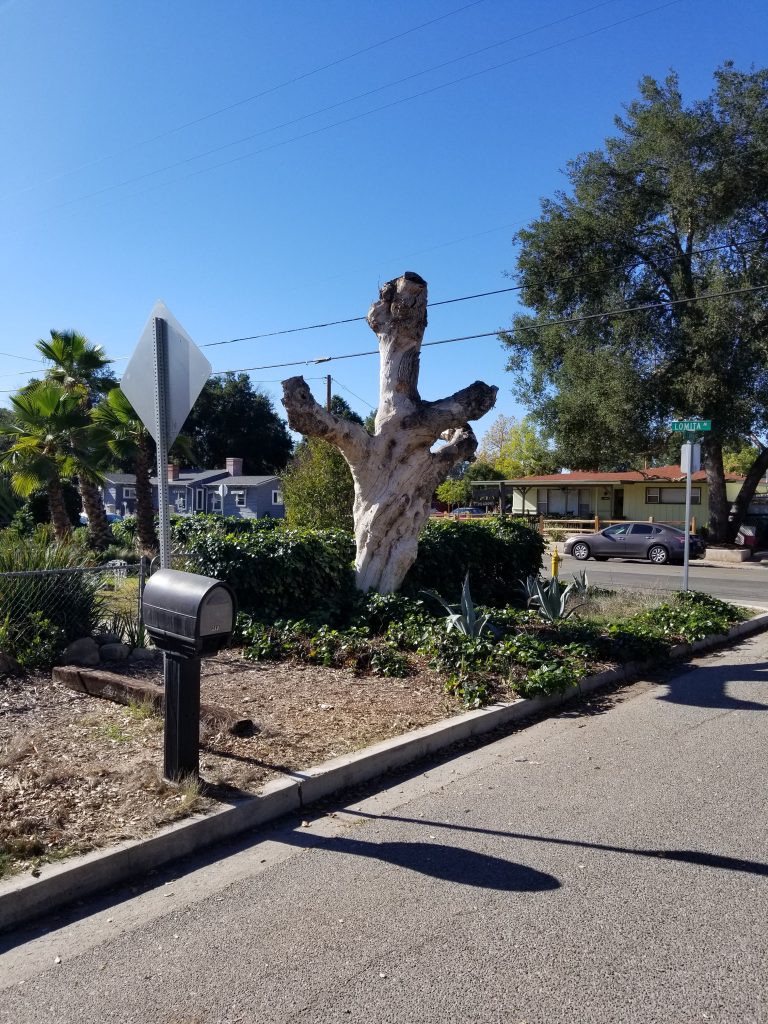
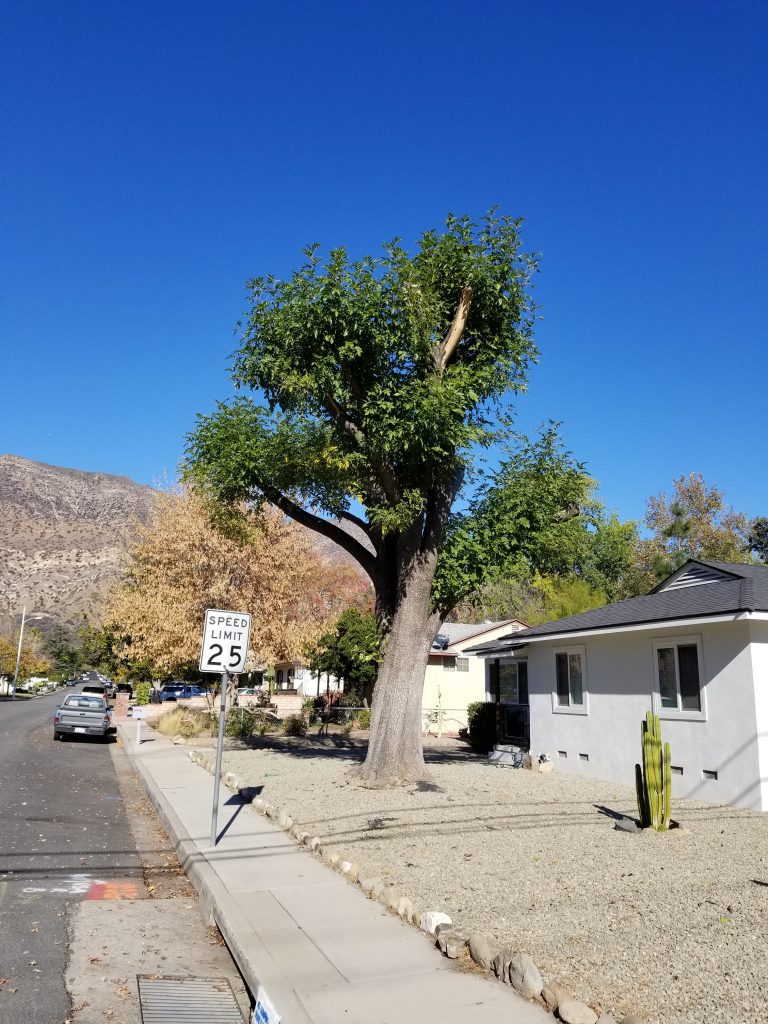
Large trees have large branches and the temptation is to remove large branches to achieve pruning objectives. This would get more done and we would then have to prune less, right? But this is a flawed strategy and the results are the opposite of what the tree owners are trying to achieve. As trees get large, pruning cuts should be smaller and occur frequently. Guidance can be given to branch growth by many small cuts rather than large ones. This approach directs growth without causing rampant regrowth of dormant or latent buds. Latent buds have a purpose, they rescue trees from death should there be a catastrophe. They are preformed along large branches and will sprout when exposed to sunlight or when the terminal buds are removed. Large topping or heading cuts typically activate latent buds and the tree subsequently grows back too many branches in one place. These require selection and careful removal over time and can involve quite a bit of repair pruning to fix the tangle cause by massive heading cuts. Aging trees develop an extensive heartwood that is easily exposed to decay from large pruning wounds so large cuts should be avoided.
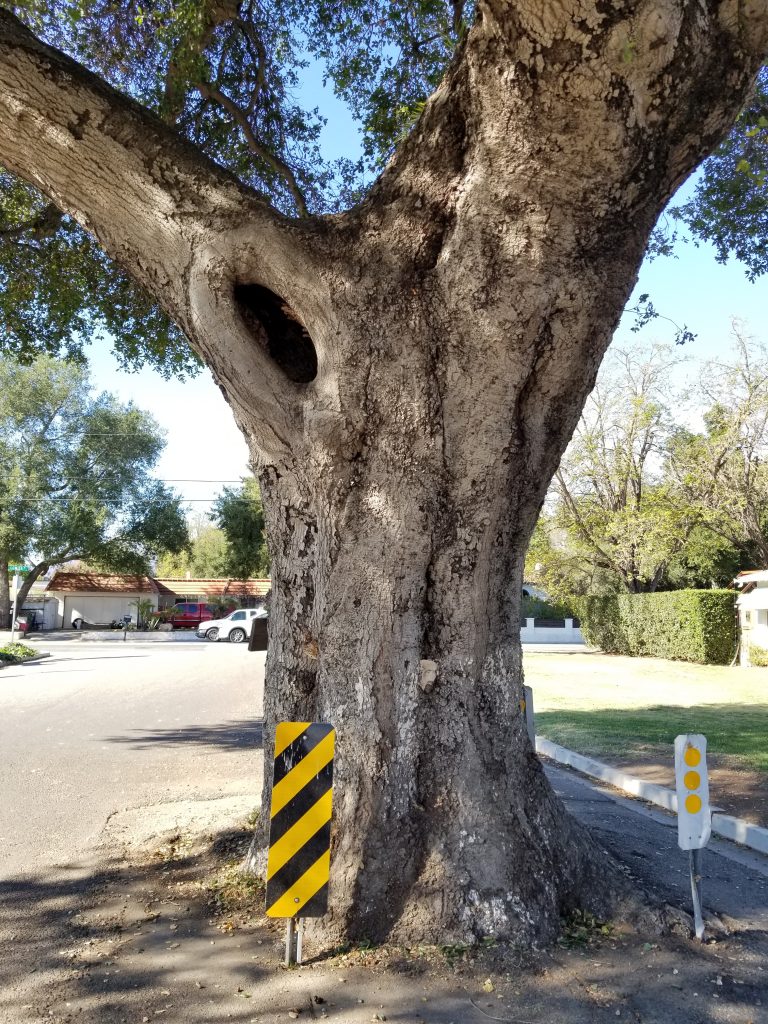
Larger trees develop more sapwood which needs energy for respiration relative to the amount of leaves in the canopy. The first duty of the leaves is to provide energy to keep all the cells in the young phloem and sapwood metabolically active. A typical tree only utilizes a few growth rings of sapwood for water transport and energy storage. As these rings age they narrow and there is less tissue from which to store and retrieve energy. Despite the subtle balance between canopy and energy utilization trees continue to grow throughout their lives at more or less the same rate. As trees age the amount of non-functional wood increases, this may be heartwood or deadwood in the canopy. At the end of their lives trees have nearly no living sapwood and the energy of the tree is mostly depleted. Over pruning causes further energy depletion. Removing leaves and buds that give rise to leaves from old trees reduces the amount of energy stored. This forces the tree to utilize sapwood reserves to recover from the pruning losses of the photosynthetic part of the tree. Severe pruning in old trees ultimately depletes them of stored sugars and leaves them without energy to make defensive compounds. This can exacerbate conditions by allowing disease or decay organisms to enter the sapwood.
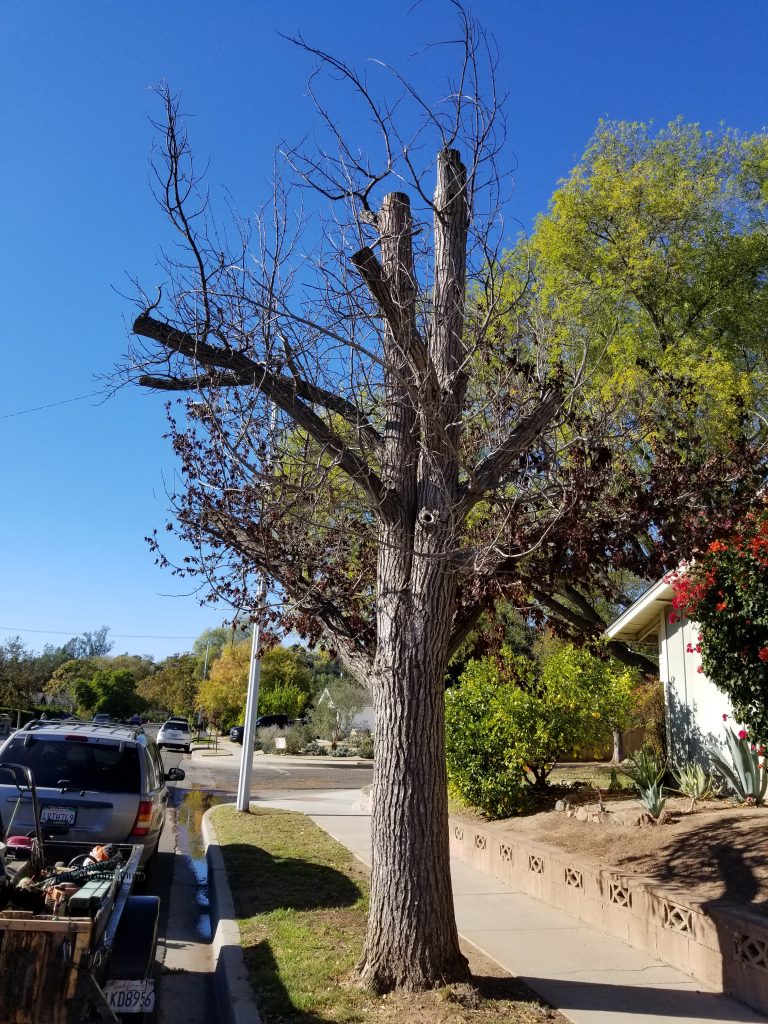
What if your large tree was never structurally pruned and has branch faults or you have concerns for failure? You should always consult a certified arborist with training in Tree Risk Assessment. The health of the tree is important but the safety of those living around it is more important. Sometimes targeted pruning can be used to shift the balance of growth in a tree and strengthen branch attachments. This can take years of careful pruning with small or modest cuts. When large branches must be removed they should be left as long as feasible and the cut should be circular not an oval shape to decrease exposed surface area. Large pruning wounds should be limited to the fewest number required to achieve the pruning goal. Pruning paints and wound dressings are not recommended.
Large trees accumulate deadwood during natural senescence of inner branches or due to injury, disease or insect attack. Common practice has suggested removing deadwood from old trees but as arborists become more sensitive to urban ecology issues we realize that deadwood is prime habitat for cavity nesting birds and other life. Deadwood serves a purpose and, if it does not pose a threat to those living under or around the tree, it should be retained especially if evidence of utilization is present.
Caring for large trees is tedious because there is a lot at stake. Old trees are valuable and provide many benefits to their owners. Always seek expert opinions and be willing to pay for them, preferably from the arborist who does not do the pruning. Then act on those opinions with care and consideration and always closely supervise any pruning being done to your trees.
Use the following pointers from Gillman for mature tree pruning strategies:
-Evaluate your tree for health, strong branch structure and evidence of decay
-Remove dead branches as needed but retain some for wildlife if needed
-Perform structural pruning when feasible
-Shorten or remove branches with cracks swellings or deformities
-Remove parasites such as mistletoe or canker infested branches
-Retain as much live tissue as possible while achieving pruning objectives
-Keep cuts small (2inches) or moderate (4″) if the tree is a good decay compartmentalizer
References:
Gillman, E.F. 2012. An Illustrated Guide to Pruning 3rd ed.
Delman Cengage Learning, Clifton Park, NY.
Manion, P.D. 1991. Tree Disease Concepts. 2nd ed. Prentice-Hall, Englewoood Cliffs, N.J.
Shigo, A.L. 2003. Modern Arboriculture A systems approach to the care of trees and their associates. Shigo and Trees Associates Durham, NH. 3rd ed.
Thank you, Jim, for a very informative article.
Thank you Dr Downer for the information Always a pleasure to read your post
Ralph Villaseñor
Thank you. I enjoyed reading the article, great insights!
Was searching for current information on pruning paint or sealers. We have some neighborhood Crepe Myrtles that are in dire need of pruning. One of the neighbors wants to use pruning sealer and I said it was not recommended. There are multiple stems, large and crowding each other. I said we would need to do a multiple year process to prune them, so as to not remove too much at one time. We are NOT pollarding them. Unfortunately, some of the cuts are going to be larger than your recommended max of 4 inches. Would you recommend removing the center ‘trunks’ or just let them grow into each other? Thanks!
Consulting a certified arborist might be the safest thing to do in this case.